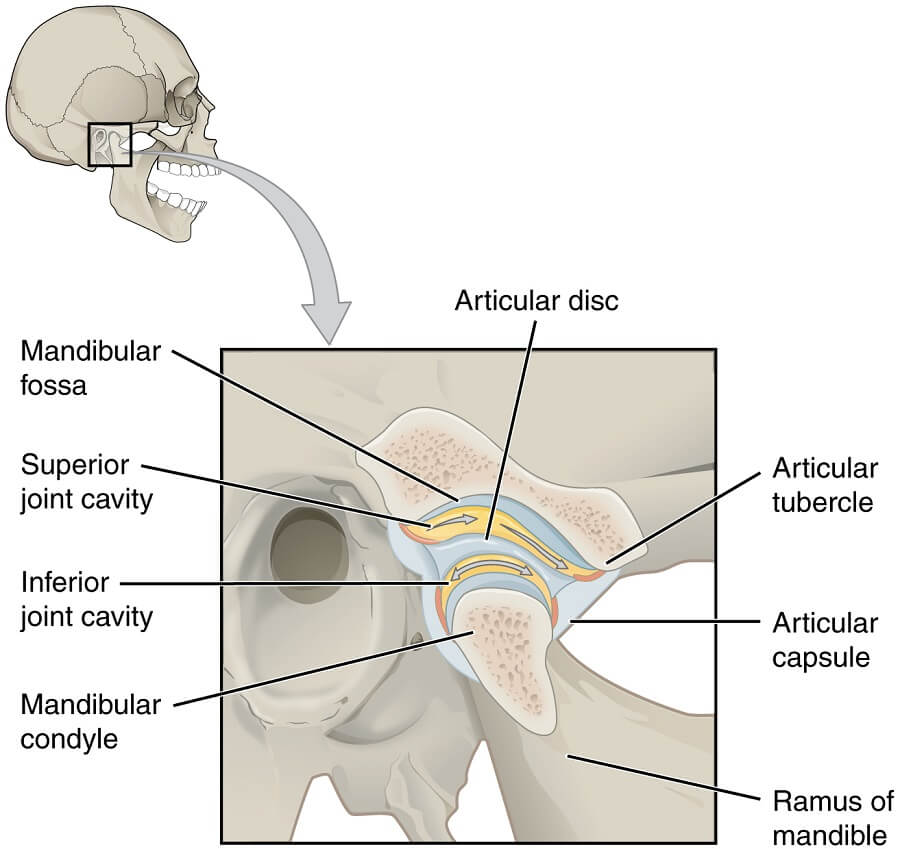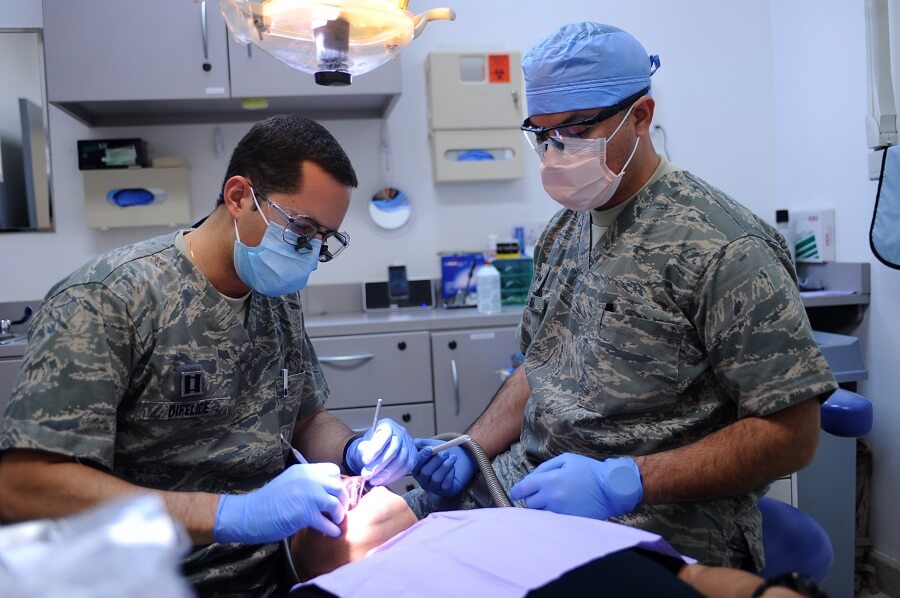The Temporomandibular Joint (TMJ), also termed as the jaw joint, permit all potential movements of the lower jaw bone. You have got two temporomandibular joints that work along as a pair, one in front of each ear. The joints connect the lower jaw bone (the mandible) to the bones of the bone on either side of the head.
The muscles controlling the joints are connected to the lower jawbone and permit the jaw to manoeuvre in 3 directions: up and down, side to side, and forward and back. The synchronized, combined movement of both the joints and its complicated anatomy and biology distinguishes it from the opposite joints within the body.
What are Temporomandibular Joint Disorders (TMD)?
It is a complex set of conditions characterized by pain within the jaw joint, its encompassing tissues, a chance of production of “click sound” while opening of mouth inflicting limitation in jaw movements. These conditions will cause numerous issues if not detected and treated earlier.
Reasons for TMJ Disorders
Owing to the complexness of the jaw joint, there are often multiple reasons a patient develops TMJ disorders. Here are few of the foremost common causes-
- Improper restoration of a tooth
- Injuries to the jaw joint space
- Various sorts of inflammatory disease
- Autoimmune diseases (a condition in which body’s immune cells attack healthy tissues)
- Bruxism (a constant grinding or clenching of teeth)
- Other rare genetic or hormonal factor
There are numerous treatment choices that we utilize to enhance the harmony and performance of your jaw. Once an evaluation confirms a diagnosis of TMJ disorder, we confirm the proper course of treatment. It’s necessary to note that treatment invariably works best with a team approach of self-care joined with skilled care.
The initial goals are to alleviate the spasm and joint pain. This is often sometimes accomplished with a pain reliever, anti-inflammatory drug or relaxant. Self-care treatments will usually be effective likewise and include:
- Resting your jaw
- Keeping your teeth apart when you aren’t swallowing or eating
- Eating soft foods
- Applying heat
- Exercising your jaw
- Practising smart posture
Image Source: Health.harvard.edu
Stress management techniques like training program or physiotherapy could, in addition, be recommended, moreover as a temporary, clear plastic appliance named as a splint. A splint or night guard fits over your upper or lower teeth and helps keep your teeth apart, thereby relaxing the muscles and reducing pain. There are different kinds of appliances used for varied functions. A night guard helps you stop clenching or grinding your teeth and reduces muscle tension at nighttime and helps to safeguard the cartilage and joint surfaces. Appliances conjointly facilitate to safeguard from tooth wear.
Non-surgical Advanced TMJ Treatments
The difficult downside as the TMJ syndrome is, your dental practitioner might recommend one or additional of the subsequent if the basic treatments as mentioned on top haven’t been helpful:
Transcutaneous Electrical Nerve Stimulation (TENS)
This medical care aims to produce pain relief by relaxing the jaw joint and facial muscles using low-level electrical currents.
Ultrasound
Ultrasound treatment procedure is adopted to use deep heat to the TMJ to alleviate soreness or improve quality.
Trigger-point Injections
This treatment procedure aims to alleviate pain by injecting pain medication or anaesthesia into tender facial muscles referred to as “trigger points”.
Radio Emission Medical Care
This treatment procedure aims at increasing the blood flow by the employment of radio waves that make a low-level electrical stimulation to the joint. Typically, the patient experiences relief of pain within the joint.
TMJ Surgery in India
The TMJ surgical intervention in India is taken into account only after all alternative treatment choices as mentioned above are tried out and none has worked to cut back the severity of pain. It’s necessary to know that the surgery undertaken is irreversible.
There are 3 kinds of surgery for TMD: arthrocentesis, surgery and open-joint surgery. The kind of surgery required depends on the TMD downside.
Arthrocentesis
Relying upon the sort of TMD syndrome, the primary step taken within the surgical intervention is termed arthrocentesis, that is a minor procedure performed within the office under general anaesthesia. it’s performed for sudden-onset, closed lock cases (restricted jaw opening) in patients with no significant previous history of TMJ problems. In this surgery, a needle is inserted inside the affected joint and then the joint is washed with sterile fluids. Sometimes, the procedure might involve inserting a blunt instrument inside the joint.
Surgery
When the diagnostics are completed indicating arthroscopy procedure, patients undergo surgery under general anaesthesia. The specialist oral operating surgeon makes a little incision ahead of the ear and inserts a small, skinny instrument that contains a lens and light. This instrument is connected to a video screen, permitting the operating surgeon to look at the TMJ and encompassing space. Counting on the reason behind the TMD, the operating surgeon would possibly take away inflamed tissue or align the disc or method. Compared with open surgery, this surgery is less invasive, leaves fewer scars, and is expounded to negligible complications and a shorter recovery time. Looking forward to the rationale behind the TMD, surgery may not be possible, and open-joint surgery is additionally necessary.
Open-joint Surgery
The procedure is performed giving patients a general anaesthesia in contrast to surgery, the whole space around the TMJ is opened so the doctor can get a full view and higher access. There are many varieties of open-joint surgeries. If the bony structures that comprise the jaw joint are deteriorating, this treatment might be useful. Compared with surgery, open-joint surgery ends up in an extended healing time and there’s a larger probability of scarring and nerve injury.
TMJ Arthroscopy
TMJ Surgery does not always cause troublesome recoveries and lots of pain. This surgical procedure is a minimally invasive surgical technique for treating the TMJ.
Recovery in this surgery is way easier than open joint surgery. Patients don’t have any incisions with this surgery. One will have solely two stitches with this surgery.
What Does the Research Say?
86.7-93% productive outcome
What all is Included?
Surgery is taken into account as the last option once all other treatments and pain management have failed to alleviate the TMD symptoms, particularly the pain.
Why is Surgery considered as the last option you’d ask?
That’s because the dental specialists typically advise you against the surgery as there’s no guarantee that it might 100% eliminate TMD and its symptoms. That’s not to say that it’s not effective because it is. What specialists try and say is that you simply should perceive the risks because whatever happens in the operating theatre is irreversible therefore make sure to ask every possible question and clarify your doubts from your operating surgeon.
Prior to the surgery proper, a surgical assessment or exercise would generally include:
- Assessment of the nature of your TMD in addition to the complete history of all the treatments availed so far.
- Different scans to incorporate dental panoramic radiograph, CT Scan, MRI, and even bone scan.
- A thorough assessment of all the risks that will be present in the patient throughout and after the operation.
TMJ Surgery Cost
For the actual surgery the price, though may vary in scope depending on the facility you selected but could include the following:
Facility Services
This is the price for using the hospital space or any sort of surgery room together with its tools, machines, and instrumentation.
Fee of the Operating Surgeon
This includes the doctor’s charge for the procedure in addition as postoperative care if included within the package value.
Anaesthesia
This includes the average anaesthesia needed to last the prescribed length of the surgery.
After knowing what proportion does TMJ surgery cost and going through the surgery, there might be the use of some pain reliever subsequently which can cost about $10 – $12 dollars for a month supply of tricyclic antidepressant drug. Doctors can prescribe this to alleviate the patient from chronic pain.
Cold therapy wraps could also be required, and you’ll be able to get them from the pharmacy for a worth of $6 – $60 dollars. The physiotherapist might charge you around $50 – $250 per session to assist you to heal quickly, and for the price of TMJ splint for stabilization of the area, may well be around $1800 – $2000 as reported from patients who have already a similar surgery.
You Should Also Read: Home Remedies to Relieve Jaw Pain / TMJ Pain
Factors Affecting TMJ Surgery Price
Cause – The dental practitioner or orthodontist would first determine the reason behind the TMD so that he or she can suggest the type of surgery required and to make sure that the TMJ is inflicting the problem and nothing else.
Severity – Apart from the cause, the dentist would also be able to understand the severity of the condition as there are surgeries that depend upon the extent of the disorder. The more severe the condition, the more invasive surgery is needed.
The Level of Misalignment – The severity of the TMD would even be apparent in the arrangement of the jaw. If you have developed a particular level of jaw misalignment, you’re like be a candidate for surgery to correct the problem, the kind of which might rely on how misaligned the jaw is.
TMJ Symptoms – The symptoms would even be a basis for the surgery. These symptoms vary reckoning on what causes them.
The Operating Surgeon – The TMJ treatment price would even be affected by the expertise and experience of the oral surgeon or an orthodontist.
Location – The cost of treatment would always be dependent on the price of living and value of doing business in a very specific area.
Jaw Reconstruction Surgery in India attracts for low cost and high-quality medical service at world-class hospitals
Jaw Reconstruction Surgery in India is far-famed for all smart reasons, among the international patients from all across the globe. The reasons are quite obvious, firstly, it comes with top quality medical services through the most effective medical experience. Of late, India has become a worldwide leader in delivering top quality health care answer at a reasonable price.
As Indian corporate hospitals are on par with those found in developed nations like the United States or the United Kingdom, and therefore treatment like Jaw Reconstruction Surgery in India has become a most popular medical destination. In addition to the progressively top medical aid, an enormous draw for foreign patients is additionally the very nominal or hardly any waitlist which is common in European or American hospitals. In fact, priority treatment is provided these days in Indian hospitals.


Dear Health Mania
I am looking for TMJ treatment in India, Since i don’t know any specialist in India for the treatment i would you to know which doctor do suggest to for the treatment.
Regards
Hi Azizullah,
You can refer to Dr Rajesh Raveendranathan who visits centres in Crystal Dental Centre, Delhi, The Right Bite CPC®, Bangalore and The Right Bite CPC® Cochin.
Thanks.